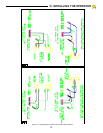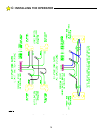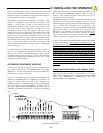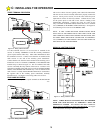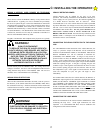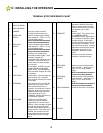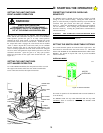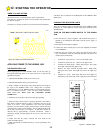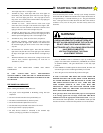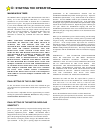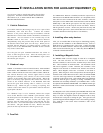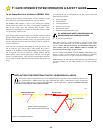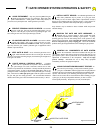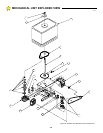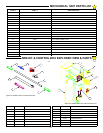
25
AVOID ENTRAPMENT: Stay away from the path of the gate
and all moving parts (gate arms, etc.) at all times. Keep clear of the
pinch points identified below.. Install guards or other safety features to
prevent access to pinch point areas. Install guards on open rollers.
PREVENT PERSONAL INJURY OR DEATH: Do not stand
near or on the gate. Gate may be activated without notice. Do not
allow anyone to “ride” the gate, or place arms or legs through the gate. The
force of the gate can cause serious personal injury or death.
NO CHILDREN OR PETS ALLOWED: Never allow a child to
operate gate controls, “ride” a gate, or play in the area of a gate.
Install and store all controls out of children’s reach. Also, pets must be
kept away from the gate. Install a pedestrian gate in applications where
children or pets need access.
KEEP GATE IN SIGHT: Never activate the gate unless it is in
sight. Install mounted controls in full view of the gate. Be sure the
gate area is clear before activating the gate, and watch the gate and gate area
as the gate is in motion.
LOCATE MANUAL CONTROLS SAFELY: A manual
control such as a pushbutton or keyswitch must be included in
your gate system design to be used if automatic controls such as radio
controls or loop detectors do not function. Carefully consider the placement
of the manual control: It must be out of reach of the gate so that no one
pushing the button or inserting the card is in the path of the gate or moving
parts; it must also be within sight of the gate so that the operator can watch
the gate and gate area during operation. The recommended minimum
distance between the gate or fence and manual conrols accessory is 10 feet.
INSTALL SAFETY DEVICES: In residential applications or in
areas where pedestrians may be present, or if your gate closes
automatically, be sure an electric edge(s) and/or a photoelectric sensor(s)
has (have) been installed and is/are operating properly. These features are
intended to detect pedestrian traffic and prevent injury or entrapment.
Loop detectors may be installed to detect vehicular traffic and prevent
vehicular damage.
MAINTAIN THE GATE AND GATE HARDWARE: A
damaged gate or one that cannot be easily opened and closed
manually must be repaired before installing a gate operator. A poorly
operating gate may cause the load sensing device of the operator to fail,
causing a risk of entrapment. Never overtighten the clutch or load sensing
device to compensate for a poorly swinging gate. Correct all mechanical
problems on the gate and gate hardware before installing the gate operator.
MAINTAIN ALL COMPONENTS OF GATE SYSTEM:
Follow the maintenance instructions included with the gate, the
gate operator, and the safety features and/or accessories that make up your
gate operator system. Have a professional service technician perform any
adjustments or maintainence to the components. Fully test all safety
features routinely. Discontinue the use of faulty safety equipment
immediately, and have the equipment replaced.
KNOW YOUR GATE ARM DISCONNECT FEATURE: In
the event of a power outage, you may need to manually operate
your gate. The HDSWG 1000 is equipped with a keyed padlock to
permit the gate arm to be manually disconnected from the HDSWG 1000
operator. This will allow you to manually push the gate open or close as
needed. Be sure to have the service technician or dealer installing your gate
system give you the key to the padlock and show you how to use this
feature quickly and safely. Keep the key in a safe, accessible place.
PINCH POINTS
ENTRAPMENT
ZONE
ELECTRIC GATE EDGE
ENTRAPMENT
ZONE
104932
Figure 23: Pinch Points
F:
GATE OPENER SYSTEM OPERATION & SAFETY



